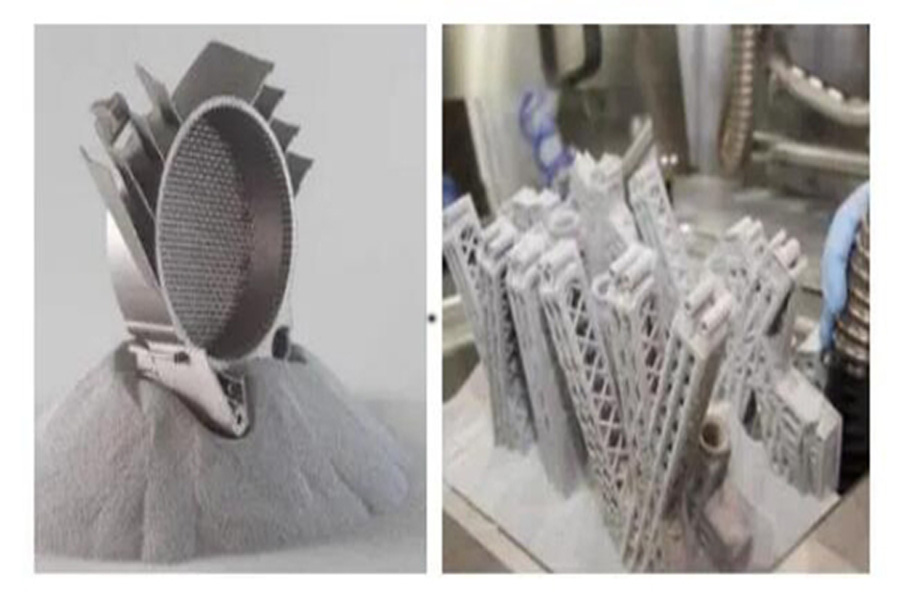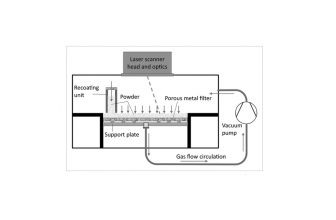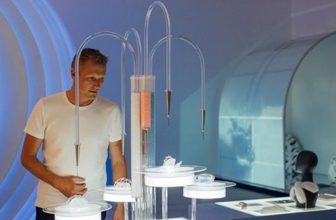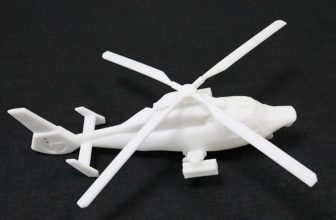
According to SmarTech, the 3D printing industry is currently experiencing two significant development trends. The first is that the global supply chain of aluminum alloy materials seems to have “crossed the threshold” and become the next generation opportunity to support additive manufacturing technology.
3D printing of aluminum alloys is making a leap, catching up with nickel alloys, stainless steel and titanium alloys.
Stronger performance and lighter materials
l .Development logic of aluminum alloy
When a material is relatively cheap but difficult to process through 3D printing, the current motivation to develop this material to be suitable for 3D printing processing technology on the market becomes insufficient, because relative to the price of 3D printing equipment, the material The effect of the price on the price of the final product is not obvious.
But what if there is a way to make this relatively cheap material easy to process, and the product performance achieved can be comparable to those expensive materials? For example, it can replace the application scenarios of medium temperature titanium alloy.
This supports the development logic of high-strength aluminum alloys.
2.Amaero HOT Al
Recently, Australia’s Amaero announced that its high-performance 3D printed aluminum alloy Amaero HOT Al has entered the national phase of international patent approval (the fourth and final phase). International patents mean that more than 150 participating countries recognize and protect an invention. In this way, inventors can recognize their inventions and creations on a global scale without going through multiple patent applications.
Amaero comes from Monash University. This university has many years of experience in the field of aerospace additive manufacturing. It has cooperated with the French aerospace company Safran to develop two 3D printed jet engines. At present, the engine has entered Commercialization stage.
In the aerospace field, the application of aluminum alloy has always had some drawbacks. Although aluminum alloys are very light, they tend to perform poorly in applications exposed to temperatures above 160°C. They soften and age over time, so the aerospace industry chooses relatively heavy metals, such as steel or titanium. How to improve the performance of aluminum alloy, this is a place worthy of research and breakthrough.
For more than half a century, scientific researchers have completed a lot of work to improve the heat resistance of aluminum alloys, so that aluminum alloys can withstand higher working temperatures without reducing mechanical properties. Today, worldwide, through 3D printing technology, new aluminum alloy materials are showing a rapid development trend, higher strength, and the possibility of replacing medium temperature titanium alloys. Amaero HOT Al has opened up a unique performance in terms of performance. Market positioning.
Take Amaero HOT Al as an example. This new aluminum alloy can be heat treated and age-hardened after 3D printing, thereby improving strength and durability, making this aluminum alloy stable for a long time at a temperature of about 260°C. Originally developed by researchers from Monash University in Australia and Amaero, Amaero now has a global license for the alloy. The development and commercialization of new high-strength aluminum alloys and equipment suitable for 3D printing of various aluminum alloys has become an obvious international and domestic development trend.
3.Suzhou Beifeng-Al250C
According to the China Daily, the research team of Monash University led by the founder of Suzhou Beifeng and Academician Wu Xinhua of the Australian Academy of Engineering has successfully developed a high-strength and high-toughness special aluminum alloy material for additive manufacturing with the grade Al250C. The Al250C material can be used for 3D printing with a yield strength of up to 580MPa, the tensile strength is above 590MPa, and the elongation rate can reach 11%. The fabricated component has passed the stability test for 5000 hours at a high temperature of 250℃, which is equivalent to the requirement of 25 years of regular service of the engine.
4.Aeromet-A20X
Internationally, many developers have emerged in the field of 3D printing of high-strength aluminum alloys. The British-based casting expert Aeromet International’s patented aluminum alloy powder A20X for additive manufacturing has produced parts that have exceeded the ultimate tensile strength of 500MPa. Strength (UTS). A20X is an aluminum-copper alloy material with a fine microstructure. Compared with other alloys, it has “higher strength, fatigue resistance and optimized thermal properties. In the test, the 3D printed A20X powder material is manufactured Ultimate tensile strength is 511MPa
5.HRL-7A77.60L
In the United States, it has achieved a fine-grained microstructure and has a material strength comparable to that of forged materials. The high-strength 7A77.60L aluminum powder for 3D printing developed by the HRL laboratory was officially launched on the market in October 2019. Users can directly apply to HRL Buy this aluminum alloy material. When aluminum alloy materials Al7075 and Al6061 are used, metal 3D printing in a laser high-energy environment will cause severe thermal cracks on metal parts. HRL researchers chose zirconium-based nanoparticle nucleating agents with the help of software and big data. , And combined them into 7075 and 6061 series aluminum alloy powders. The formed material is crack-free and equiaxed (that is, the grains are approximately equal in length, width, and height), achieving a fine-grained microstructure and having comparable material strength to the forged material. The 3D printed aluminum alloy material yields on average The strength is as high as 580 MPa, the ultimate strength is more than 600 MPa, and the average elongation is more than 8%.
3D printing of aluminum alloys is gaining more extensive development. Earlier in 2020, Optomec, a manufacturer of DED directional energy deposition 3D printing equipment, announced advances in its applicable materials for LENS 3D printing. The Optomec system can now be used to deposit any aluminum alloy, including its recently developed aluminum alloy with improved additive manufacturing properties.
6.QuesTek
QuesTek Innovations, another metal powder manufacturer, has begun to cooperate with the German Aerospace Center to develop new aluminum alloy raw materials. The alloy will exhibit high strength at high temperatures ranging from 200°C to 300°C, and can even replace titanium alloys in certain applications.
A few years ago, Nanjing University of Aeronautics and Astronautics developed aluminum-based nanocomposites based on SLM forming for use in the field of laser additive technology, effectively solving the mismatch and enhancement of aluminum-based nanocomposites in the process and mechanical properties of the laser additive process. The uneven particle distribution and poor wettability between the ceramic phase and the substrate phase make the obtained product have good interface bonding and excellent mechanical properties.
In short, the emergence of high-strength aluminum alloy materials for 3D printing has opened a new door to the processing of parts that must be realized by forging. Combined with the design freedom released by 3D printing, high-strength aluminum alloys will be used in pressure vessels, The field of hydraulic manifolds, brackets, and high-strength structural parts has gained a huge market space for imagination.





